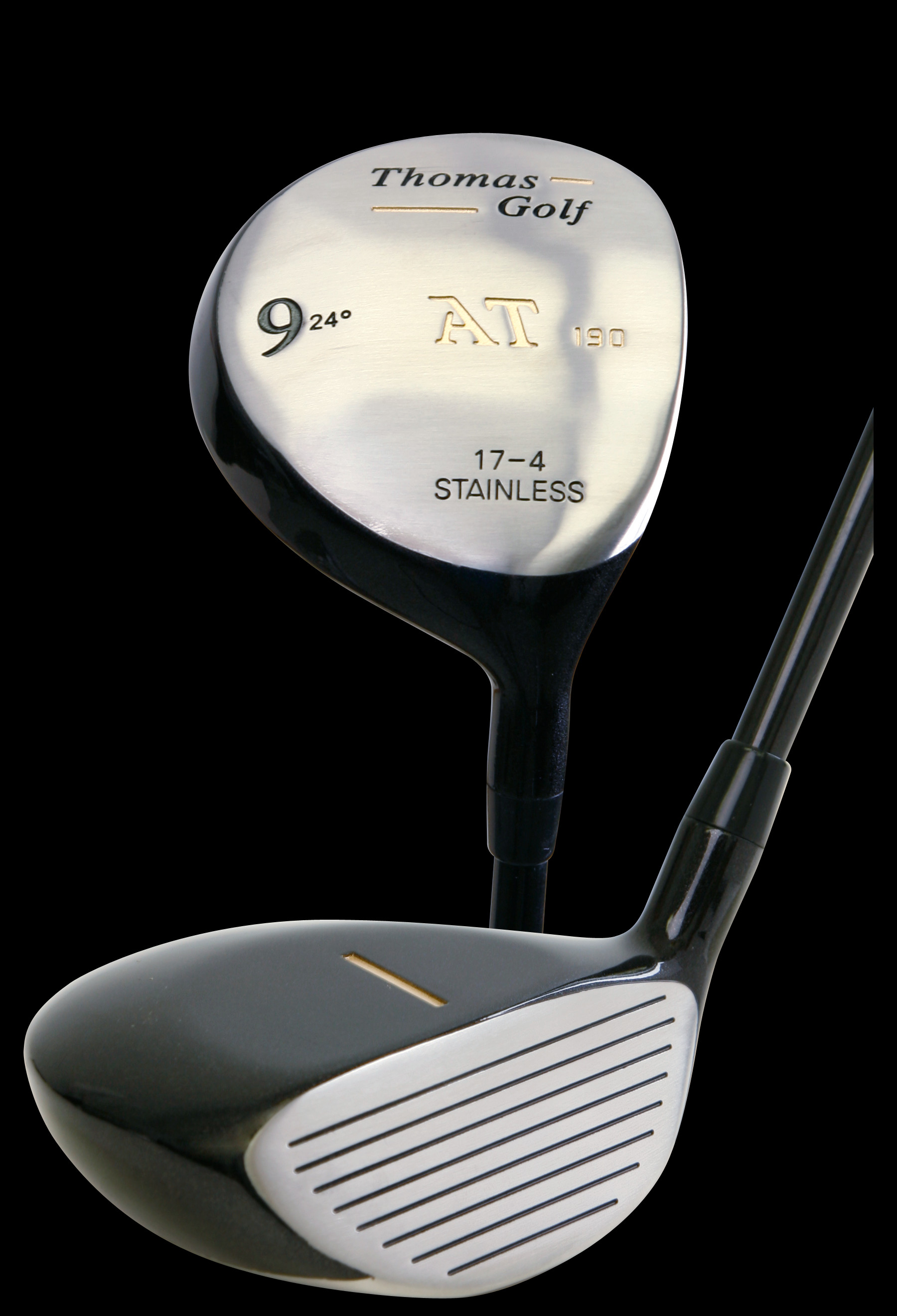
If you're having problems hitting your standard 4 iron you should switch to a #9 fairway wood, it has the ability to hit the ball with height, forgiveness, and distance.
• The nine wood is a great choice to replace a 4 iron or 4 hybrid. It has a larger head than a hybrid which for some golfers, it will give them more convenience at the address position. With about 26 degrees of loft, it provides more loft than a 7 wood, which typically has only about 22 degrees of loft. The additional loft makes it easier to hit the ball high even off a tight lie; it’s also very effective from difficult lies like tall grass. In fact, most golfers can hit their 9 wood from the fairway or the rough with enough height and forgiveness, which is not always the case with their 7 wood.
• The club-length of a #9 fairway wood is about 1 inch shorter than a 7 wood, making it much easier to consistently hit the sweet spot.
• The #9 wood will have about 10 more grams of sole head-weight compared to a 7 wood. This additional sole weight will help you in two ways; getting the ball up quicker off the fairway or out of a fairway bunker.
A 9 wood is ideal for golfers who have a sweeping swing, and is a very good choice if you have a shanking problem with standard irons.
For more information on Thomas Golf Men"s Fairway Woods click here or Ladies Fairway Woods click here

Picking Targets with Your Fairway Woods
One of the vital skills that any golfer must possess is the ability to pick good targets – and then hit shots right at those targets. The strategy and planning that goes into picking a smart target is something that is overlooked by many golfers. Even if you aren’t consistent enough with your swing to hit the target the majority of the time, you can still put in the effort to make good decisions knowing that they will pay off at some point.
Picking targets with your fairway woods is pretty similar to picking a target with any of your other clubs. The key is understanding the trajectory that you are going to hit with a given fairway wood, and then choosing your target to allow for that ball flight. For example, your golf 3 wood is going to come into the green on a flatter trajectory than your golf 7 wood, so the target you select will be based on how much bounce and roll you are planning on after the shot lands. What might be a safe target line for your 7 wood could be too dangerous to try with your 3 wood. It isn’t as easy to get the ball to stop quickly with a fairway wood as it is with a short iron, so the roll out always needs to be accounted for.
When using your fairway woods off the tee, you want to focus your target picking efforts on taking as much trouble out of play as possible. The point of using your fairway wood off the tee in the first place is to get the ball in the fairway, so pick out the safest line that you can find and hit your shot in that direction. That means keeping the ball away from bunkers, water hazards, trees, etc. While this strategy might leave you with slightly longer approach shots than if you took a more aggressive line, you will come to appreciate how many shots you get to hit into the green from the short grass. Golf is hard enough as it is, you don’t want to make the game any harder by playing from the rough.
Another time where you will be forced to pick a smart target line with your fairway woods is when you are going for the green in two shots on a par five. Assuming there are no major hazards like water to consider, the number one goal in your mind should be to position your ball to make a birdie. Sure it would be great to make an eagle, but you are really trying to get your ball in a spot where you can get down in two – either with a two putt, or an up and down.
Therefore, making sure you avoid the ‘short side’ of the green should be your top priority. The short side is the side of the green where the pin is located on that day. For a second shot on a par five, you actually want to aim away from the hole to the opposite side of the green more often than not. This might seem strange if you are used to aiming your shots directly at the hole all day long, but it is a smart strategy that will lead to more birdies than you are used to making on par fives. For your next few rounds, try this approach on your par five second shots and the results are likely to impress you.
As one additional note, the strategy for picking a target line on long par threes should be much the same as the strategy on par five second shots. You want to make sure to give yourself as much green to work with as possible so you can get in with your par more often than not. If you get too aggressive and aim your tee shot right at the flag, you could find yourself frequently faced with challenging little chip shots or bunker shots. Be cautious with your target lines and do your best to get off the long par threes with a par as often as you can.






